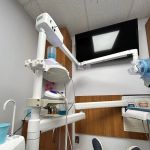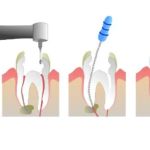What to Expect During a Teeth Cleaning Appointment
Going to the dentist for a teeth cleaning appointment is a standard part of maintaining good oral health. However, if you're new to dental visits or it's been a while since your last cleaning, you may wonder what to expect. I’ve had my fair share of visits to the dentist, and I can tell you that knowing what happens during a teeth cleaning can make the experience much more comfortable and less stressful. In this article, I will take you through the process step-by-step, share some personal experiences, and explain the importance of regular cleanings for your overall health.
1. Checking In and Getting Comfortable
The first step when you arrive at the dentist's office is checking in. This may involve filling out some forms about your medical history, including any allergies or medications you are currently taking. Once you're all checked in, you'll be asked to wait in the reception area until your hygienist is ready to see you. This is also a good time to ask any questions you might have about the process or discuss any concerns, such as sensitive areas in your mouth that need extra attention.
As you settle into the dental chair, the hygienist will ensure that you're comfortable. They might give you a small pillow to support your neck and a blanket if needed. During my visits, I found that being relaxed and communicating my comfort level with the hygienist made the experience a lot easier.
2. The Cleaning Process Begins: Scaling
The first part of the cleaning process is usually scaling. Scaling involves the removal of plaque and tartar (hardened plaque) from the surfaces of your teeth. The hygienist will use a small metal tool that vibrates to gently scrape off the plaque. You may feel a bit of pressure, but it shouldn’t be painful. Most patients feel a little discomfort in areas where there is more buildup, but the hygienist will move carefully and adjust based on your comfort level.
In my experience, I was always surprised by how much better my mouth felt after the scaling. It’s a bit of a weird feeling, but there’s no doubt that you can instantly feel the difference once the plaque is removed. If you’re a little nervous about the sounds of the tools, I recommend closing your eyes and focusing on your breathing. It’s a simple trick that helps calm nerves.
3. Polishing and Flossing
After the scaling, the hygienist will polish your teeth. This involves using a special gritty toothpaste and an electric toothbrush-like tool to give your teeth a smooth, shiny finish. It feels like a gentle massage for your teeth, and the taste of the toothpaste can be minty and refreshing. Some people find this part of the cleaning quite relaxing, as it doesn't involve much pressure and is over quickly.
Following the polishing, the hygienist will floss your teeth to remove any remaining debris. Flossing helps to get into areas between your teeth that the scaling tool or the electric toothbrush couldn’t reach. I always look forward to this part because my hygienist is great at flossing—making sure to get deep between each tooth without causing discomfort.
4. The Final Check: X-rays and Examination
After your teeth have been cleaned, the dentist will come in for a final checkup. They will examine your teeth and gums to ensure everything looks healthy. In some cases, if it’s your first visit or if it’s been a while since your last cleaning, the dentist may take X-rays of your teeth to get a clear picture of what’s going on below the surface. This allows them to detect any issues like cavities, gum disease, or other dental problems that are not immediately visible.
During one of my visits, I was surprised to find that an old filling had started to crack, which would have been missed without the X-rays. It’s a good reminder that regular checkups, even with simple cleanings, are essential to prevent future problems from escalating.
5. Advice and Recommendations
Once the cleaning is complete, the dentist or hygienist may give you some advice about how to care for your teeth at home. This might include recommendations on the right toothbrush, toothpaste, or techniques for flossing. In some cases, they may also suggest specific dental treatments, such as fluoride applications or sealants, depending on your oral health status. If you have any questions about your oral hygiene routine or concerns about your teeth, this is the time to ask.
I always leave my dental appointments feeling empowered with new knowledge. A few visits ago, my hygienist recommended a softer toothbrush to help with my sensitive gums, and it made a huge difference in my daily routine. Taking the time to listen to these professional tips can really enhance your overall dental health.
6. After the Cleaning: What to Expect
After the cleaning, most people experience a clean and fresh feeling in their mouths. Some may have slightly sensitive gums or teeth for a day or two, but this usually subsides after brushing and using a fluoride rinse. I personally like to give myself a day to avoid any hard or crunchy foods to let my gums fully recover from the cleaning process.
If you’ve had a lot of tartar buildup, you might notice your gums bleeding a little during the cleaning. This is normal, and it doesn’t usually signify a problem. However, if bleeding persists or if your gums feel inflamed in the days following the cleaning, you should follow up with your dentist. It’s always best to get ahead of any potential issues before they become more serious.
How Regular Cleanings Benefit Your Oral Health
Regular teeth cleanings, typically every six months, are a vital part of maintaining oral health. Professional cleanings help remove plaque and tartar that you can’t get rid of with regular brushing and flossing alone. The process also allows your dentist or hygienist to detect early signs of dental issues like cavities, gum disease, or oral cancer, so you can address them before they become more severe.
Over the years, I’ve come to value my teeth cleaning appointments not just as a way to keep my smile looking bright, but as an important part of maintaining my overall health. Good oral hygiene can help prevent other health issues, such as heart disease or diabetes, which are linked to gum disease.
If you’re looking for an easy way to keep your teeth in top condition, don’t hesitate to book that cleaning appointment. And if you find yourself needing additional dental services, feel free to check out Dentistry Toothtruth for professional care and tips on oral health!







 Hutchinson Metro Dental4.0 (2685 review)
Hutchinson Metro Dental4.0 (2685 review) Emerson Family Dental5.0 (273 review)
Emerson Family Dental5.0 (273 review) Mundelein Dental Center3.0 (8 review)
Mundelein Dental Center3.0 (8 review) Sunnyvale Pediatric Dentistry and Orthodontics4.0 (365 review)
Sunnyvale Pediatric Dentistry and Orthodontics4.0 (365 review) Great Smiles Dental Care4.0 (472 review)
Great Smiles Dental Care4.0 (472 review) Larchmont Family Dental5.0 (532 review)
Larchmont Family Dental5.0 (532 review) The Importance of Oral Health Education During Pregnancy for a Healthy Pregnancy
The Importance of Oral Health Education During Pregnancy for a Healthy Pregnancy Best Tips for Brushing Your Teeth Properly for Healthy Gums: Essential Techniques for Oral Health
Best Tips for Brushing Your Teeth Properly for Healthy Gums: Essential Techniques for Oral Health Why Skipping Dental Checkups Can Lead to Bigger Oral Health Problems
Why Skipping Dental Checkups Can Lead to Bigger Oral Health Problems Advantages of Porcelain Dental Restorations
Advantages of Porcelain Dental Restorations How Can Diabetes Cause Tooth and Gum Problems? Preventing and Managing Oral Health Issues
How Can Diabetes Cause Tooth and Gum Problems? Preventing and Managing Oral Health Issues Healthy Habits for Promoting Good Oral Health and Hygiene: Tips for a Healthy Smile
Healthy Habits for Promoting Good Oral Health and Hygiene: Tips for a Healthy Smile